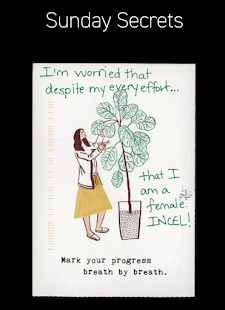Divergent Streams - Cam
In the seventh and final chapter of Scott Rettberg's Electronic Literature, Rettberg dove into additional branches within the electronic literature stratosphere. The previous five chapters of the book tackled 5 core genres of electronic literature, but this finale chapter went into the genres that Rettberg couldn't provide a sole chapter to. Rettberg says that, "In this concluding chapter I will briefly describe some other genres that deserve fuller treatment than the space of this volume will allow" (Rettberg 183). I was fascinated by the concept of locative narratives, which incorporate data from mobile devices and GPS signals to . Rettberg describes locative narratives, saying, "Electronic literature authors have begun to explore how locative technologies can enable us to layer narrative and poetic experiences on the world around us. In addition to GPS, technologies such as radio frequency identification (RFID) and QR codes have allowed us to tag stories on locations." Utilizing the evolving relationship between human beings, technology and the world around us as a method of story generation is extremely interesting. Mapping as a concept is something that remains important to navigating the world, and technology has only expedited how easy it is to access a map. Using locations as identifiers within digital stories makes a digital treasure map, of sorts, to explore, which is an extremely niche storytelling method. Another electronic literature concept I felt myself diving into was expanded cinema. Expanded cinema was an early concept, introduced in 1970 by Gene Youngblood, that visualized a world where computers were forefront in the creation of films. Retrospectively, nearly all components of film have evolved into digitized elements, ranging from digital cameras, digital film editing, animated graphics, and even 3-D and 4-D curated projects. This sort of evolution of film is testament to how much technology has taken over our understanding of art, and specifically art containing literature.
After glancing through the text for a project to discuss for this week's Bring It To The Table discussion, I came across Pry, in the expanded cinema section of the chapter. Pry is an iPad application story, which was created by Danny Cannizzaro and Samantha Gorman in 2014. Rettberg describes Pry, saying, "Cannizzaro and Gorman's Pry, winner of the 2015 Robert Cover Award, is an iPad application, a hybrid novella that borrows elements from electronic literature, cinema, and games in developing a narrative that engages with the specific materialities of the touch screen interface" (Rettberg 194). From a plot perspective, Pry follows a soldier named James, who returns home from being deployed in Iraq for the Gulf War, and the story follows his struggle with PTSD and failing eyesight. The story follows how drastic his life has been mangled by his experience in the war, and his story is told through the reader using videos and text; the medium causes the app to simultaneously appear as a book and film. The story has won several awards, and was curated by Apple as one of the "Top 25 Apps of 2015", which is one of the most mainstream examples of expanded cinema. The app was updated a few years ago to be configurable within the Apple Watch, but has since been left stagnant in the App Store.


Pry seems really interesting. It is fascinating how an app was created for a story and is able to go between book and film. This is definitely something I want to explore more.
ReplyDelete